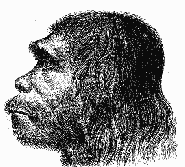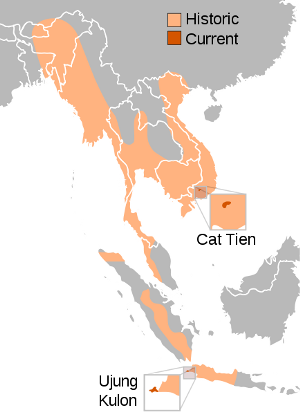Friday 27 February 2009
Extinct Animals brought back again?

It could happen sooner than you might think. We already know that Mammoth DNA has been recovered, but that is only half the challenge in bringing back an extinct species of animal. Other considerations have to be a proper carrier (you cannot implant a mammoth egg into a mouse and expect that to work!) along with an undamaged amount of DNA. However, thanks to advances in the processes of decoding DNA it is now possible, even probable, that we could bring back extinct species of many different animals – and help those that are on the very brink of destruction right now. Although cloning would be an issue in gene shallowing, it is possible to mate the clones with wholly unique individuals, or bring back several different individuals and that way avoid the issues of just having a bunch of genetically identical animals.
Although some technological advances still need to be made – we are at the brink of being able to do it within this next decade, and we could see the rise of the mammoth from the ashes of our distant past in which we hunted them to annihilation. One of the more controversial mammals that could be brought back is one that we are related to – and helped to cause the extinction of by filling their ecological niche, and they would pose a very hard ethical question too.
Homo neanderthalis or Neanderthals as we call them. Neanderthals were and are not an ancestor of ours, but a closely related offshoot of an originator before us and them. If we were to bring back Man’s closest relative, what kind of ethical nightmare would that make? It might be somewhat of a major issue bringing back a human cousin that is not of the same species as us. They have been extinct for nearly 25,000 years.
Another animal that could be brought back is a more recent victim of extinction, but also a very powerful predator in its day, the
Short-face bear. This monstrosity is a third larger than the
Polar Bear, and would weigh more than a tone. It is feasible as there are existing frozen specimens. Another fearsome creature that science could unleash is the Sabre-toothed tiger, a large carnivore that killed by going right for the jugular if recent science and research is correct. Another large creature, but not a carnivore, would be the
Glyptodon – a nearly tank sized armadillo (well, tank sized for the small armadillo anyways). Other ancients that could be brought back include the
Irish Elk, and the
Giant Ground Sloth, which would both serve as something of a less controversial emergence.
Some more recent passings which were wrought by man are the
Tasmanian Tigers. Extinct in 1936 by the will of man alone, they could be brought back and fill an ecological niche voided when the last one died in a zoo. Another possibility is the old
Dodo, of which a good specimen exists. The Dodo was hunted exclusively by man when found, and the accounts of the deaths of the last known are recorded for all of posterity from the year 1690. There is also the possibility of bringing back yet another avian – the moa. The
moa was a large flightless bird that lived in New Zealand, and several eggs are well preserved in the mountain caves of New Zealand.
Picture of the dodo by
Ballista, licensed under
GFDL
You can help spreading the word about this animal by liking it on facebook
Permanent Link
Friday 13 February 2009
Homo neanderthalensis - extinct from competition

Recent study shows that Homo neanderthalensis went extinct from competition.
Until recently it had been thought that Neanderthals went extinct due to climate change, scarcity of food sources, and other environmental changes – although it has long been postulated that Cro-Magnon man outcompeted his cousin Neanderthals. In the study location, time, and conditions of those times were looked at carefully using radiocarbon dating along with high-quality simulations. Using special algorithms along with advanced predictive models it was shown that Neanderthals should have had no real reason to continue their decline unless another source was causing it.
Neanderthals are not a direct ancestor to modern man, but instead are an offshoot of a common ancestor. Nearly identical in most respects, their cranial capacity was only slightly less than our own, however their strong build and oft-found healed fractures indicate a much rougher and harder life than that of Cro-Magnon man. What the modern Homo sapiens lacked in muscle was made up for in more efficient means of hunting and use of tools. Additional plausible explanations include the more complex roles in early societies and understandings of broader visions and planning – however it is unknown whether this occurred then, or later, and whether it was the result of a different social structure. Cro-Magnons are in essence modern man; however they are distinct enough to be considered early modern man. The genes from mitochondrial DNA matches those of the inhabitants of Europe today along with Africa, while mutations are found in populations further out.
The Study showed that the last populations of Neanderthals to die out lived in Spain, at the southern end, as they avoided contact and competition with Cro-Magnon man. However once contact was made, they too died out. It is unknown exactly how they were eliminated from the line, but it is seen that modern humans were taking away the niches that Neanderthals had held for thousands of years, and with nowhere to go they simply died out through starvation. However combat has never been directly ruled out by any study, and it is possible and likely that combat would have occurred over restricted resources.
To read more about the findings of the study, follow
this link
You can help spreading the word about this animal by liking it on facebook
Permanent Link
Monday 09 February 2009
Critically Endangered Javan Rhinos Found

Four to be exact – four of the rarest rhinos, the Javan Rhinos, were found in the dense jungles of Indonesia. The four young rhinos are some of the rarest creatures on the planet. Initially some of the most widespread, one of the three subspecies was extinct by 1900 due to direct human hunting and slaughter – the other are on the very brink of total annihilation. The other species called the Vietnamese Rhino, has just twelve known living specimens and is even rarer than the Javan rhino which has only 40 living.
The Javan rhino was thought to be extinct several times, as many sources list it as such. It is such a rare animal that the surprising find has shocked many in the conservation efforts as all four found were young. This gives hope to the possibility of recovery of the rhino, as the four ran back into the jungle upon being spotted and were seen leaving with two older rhinos.

The hope, since these were all found in the wild, is that the rhino can make a recovery with the help of conservation efforts. Unfortunately no zoo has a Javan Rhino, and humans continue to attempt to poach them for their black-market value, and they are under constant threat of death from this. Additionally as the population of humanity booms in the region, their habitat is being stripped at an alarming rate. Indifference by local officials in some areas and by the population could doom the species. This is a case where human beings are directly in control of the fate of this critically endangered species, and it falls to us to either kill them all, or let them live and repopulate.
You can help spreading the word about this animal by liking it on facebook
Permanent Link
 It could happen sooner than you might think. We already know that Mammoth DNA has been recovered, but that is only half the challenge in bringing back an extinct species of animal. Other considerations have to be a proper carrier (you cannot implant a mammoth egg into a mouse and expect that to work!) along with an undamaged amount of DNA. However, thanks to advances in the processes of decoding DNA it is now possible, even probable, that we could bring back extinct species of many different animals – and help those that are on the very brink of destruction right now. Although cloning would be an issue in gene shallowing, it is possible to mate the clones with wholly unique individuals, or bring back several different individuals and that way avoid the issues of just having a bunch of genetically identical animals.
It could happen sooner than you might think. We already know that Mammoth DNA has been recovered, but that is only half the challenge in bringing back an extinct species of animal. Other considerations have to be a proper carrier (you cannot implant a mammoth egg into a mouse and expect that to work!) along with an undamaged amount of DNA. However, thanks to advances in the processes of decoding DNA it is now possible, even probable, that we could bring back extinct species of many different animals – and help those that are on the very brink of destruction right now. Although cloning would be an issue in gene shallowing, it is possible to mate the clones with wholly unique individuals, or bring back several different individuals and that way avoid the issues of just having a bunch of genetically identical animals. 
 Recent study shows that Homo neanderthalensis went extinct from competition.
Recent study shows that Homo neanderthalensis went extinct from competition.  Four to be exact – four of the rarest rhinos, the Javan Rhinos, were found in the dense jungles of Indonesia. The four young rhinos are some of the rarest creatures on the planet. Initially some of the most widespread, one of the three subspecies was extinct by 1900 due to direct human hunting and slaughter – the other are on the very brink of total annihilation. The other species called the Vietnamese Rhino, has just twelve known living specimens and is even rarer than the Javan rhino which has only 40 living.
Four to be exact – four of the rarest rhinos, the Javan Rhinos, were found in the dense jungles of Indonesia. The four young rhinos are some of the rarest creatures on the planet. Initially some of the most widespread, one of the three subspecies was extinct by 1900 due to direct human hunting and slaughter – the other are on the very brink of total annihilation. The other species called the Vietnamese Rhino, has just twelve known living specimens and is even rarer than the Javan rhino which has only 40 living. 